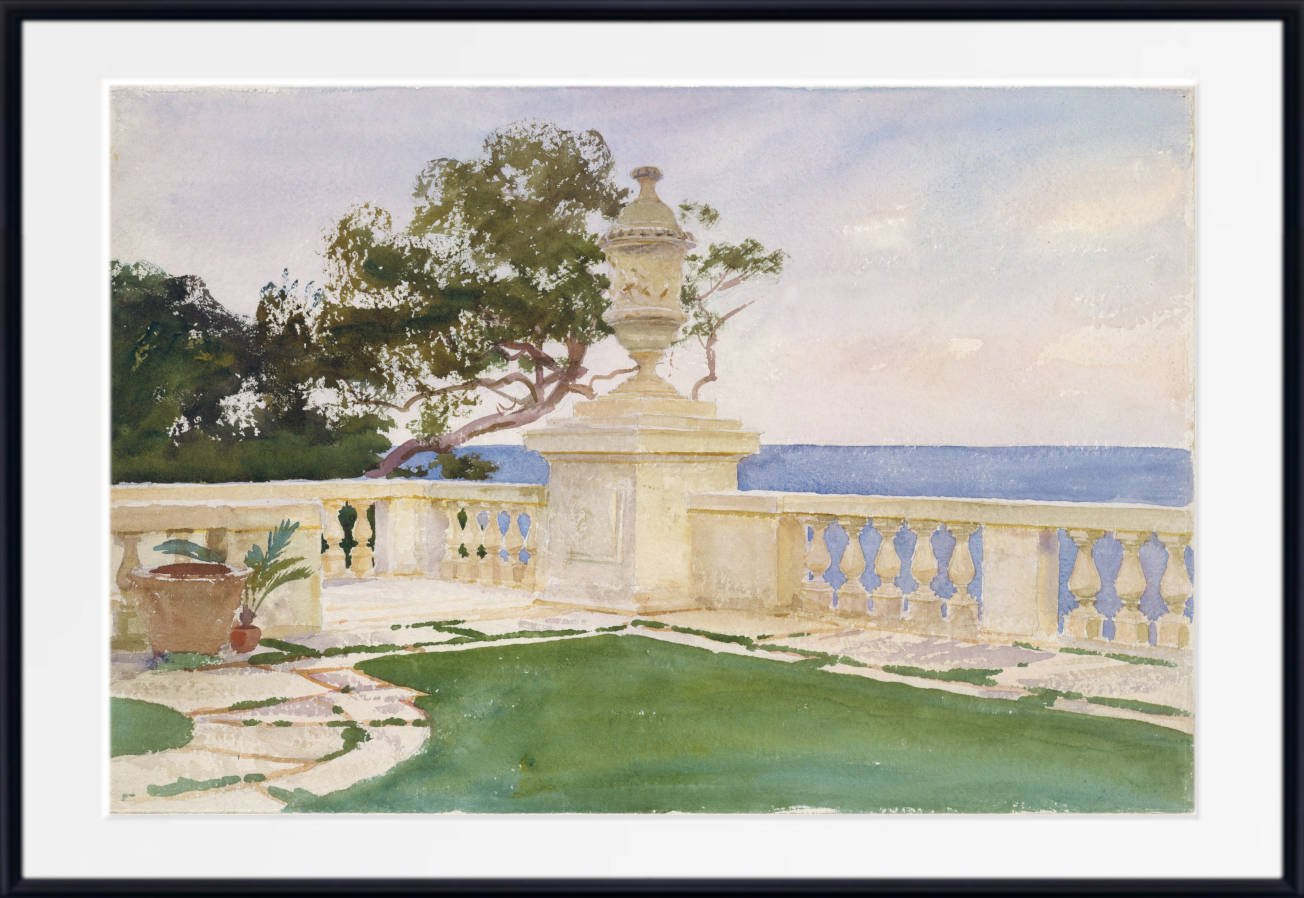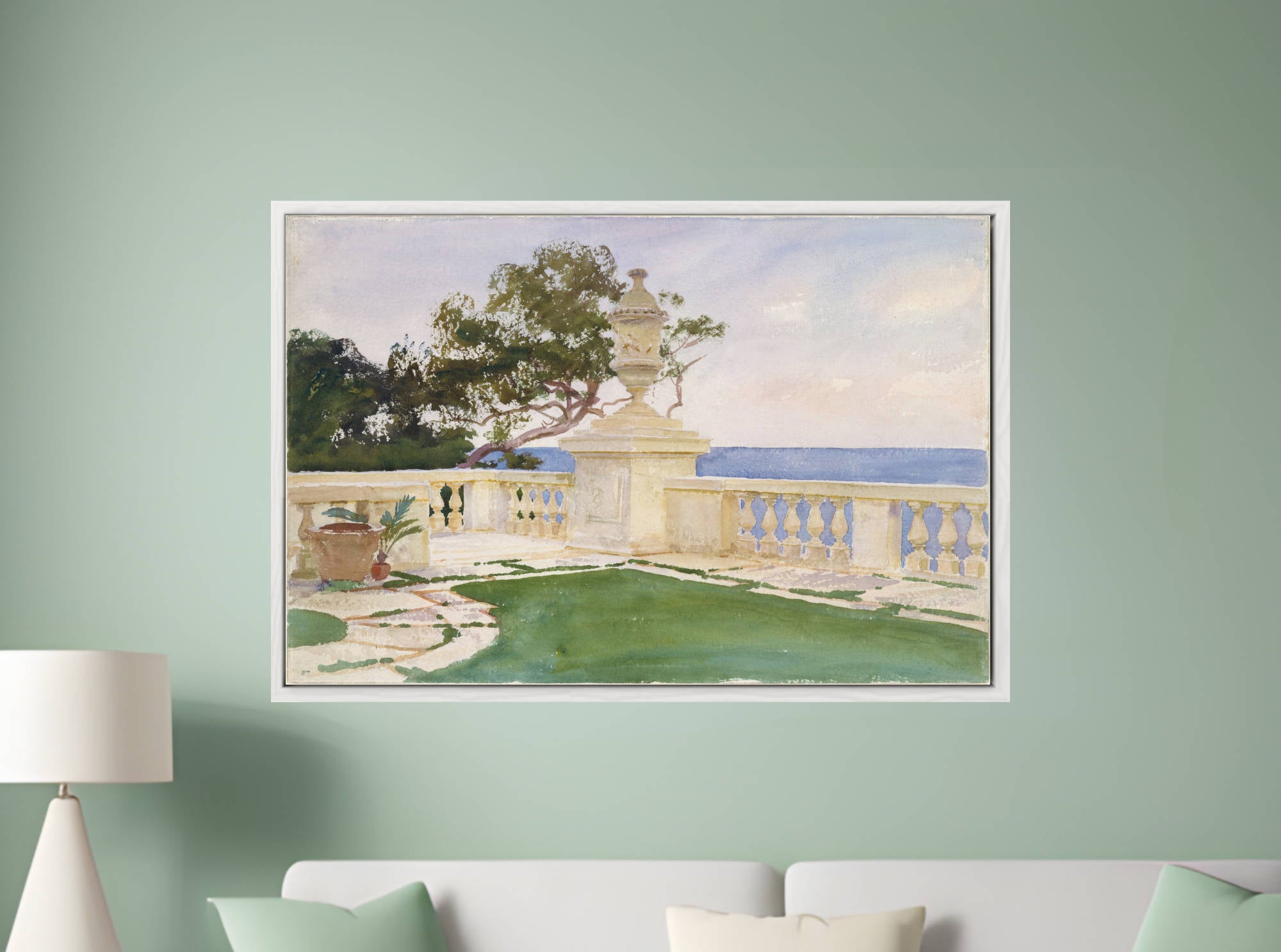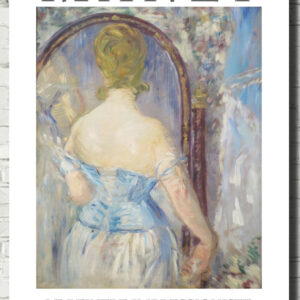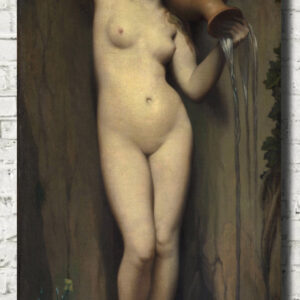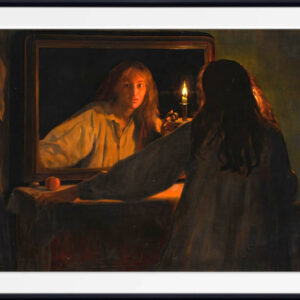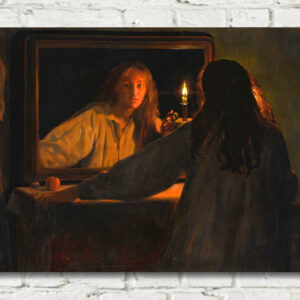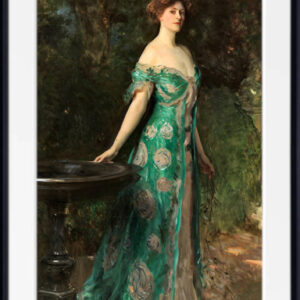John Singer Sargent Print, Terrace, Vizcaya (1917)
John Singer Sargent Print, Terrace, Vizcaya (1917)
Terrace, Vizcaya (1917)
John Singer Sargent’s painting “Terrace, Vizcaya” (1917) is a captivating representation of the opulence and elegance associated with the Vizcaya estate in Miami, Florida. The work showcases Sargent’s exceptional skill in capturing light, color, and architectural detail, which vividly conveys the grandeur of the estate’s terrace.
The composition features a sweeping view of the terrace, adorned with lush foliage and decorative elements typical of the Italian Renaissance. Sargent’s meticulous attention to detail is evident in the intricate stonework and the vibrant greenery that envelops the scene. The juxtaposition of the structured, formal architecture against the wild, organic forms of the plants creates a harmonious balance, reflecting the integration of nature and human artistry. The use of natural light enhances the atmosphere, casting dappled shadows and highlights that bring the painting to life.
One of the notable aspects of “Terrace, Vizcaya” is Sargent’s ability to evoke a sense of place and time. The terrace is depicted in a moment of serene tranquility, inviting viewers to imagine themselves within this lush paradise. The painting embodies a leisurely lifestyle, characteristic of the early 20th century, when wealthy patrons sought refuge in grand estates. Sargent’s loose brushwork and fluid application of paint suggest movement and life, enhancing the overall vibrancy of the scene.
Moreover, this artwork reflects Sargent’s evolution as an artist. While he is often associated with portraiture, “Terrace, Vizcaya” highlights his ability to capture landscapes and architecture with the same finesse. The painting serves as a testament to Sargent’s versatility and his deep appreciation for beauty in both natural and constructed forms, making it a significant contribution to the canon of American art.
John Singer Sargent – The Artist
John Singer Sargent (January 12, 1856 – April 14, 1925) was an American expatriate artist, considered the “leading portrait painter of his generation” for his evocations of Edwardian-era luxury. He created roughly 900 oil paintings and more than 2,000 watercolors, as well as countless sketches and charcoal drawings. His oeuvre documents worldwide travel, from Venice to the Tyrol, Corfu, the Middle East, Montana, Maine, and Florida.
He was born in Florence to American parents, and trained in Paris before moving to London, living most of his life in Europe. He enjoyed international acclaim as a portrait painter. An early submission to the Paris Salon in the 1880s, his Portrait of Madame X, was intended to consolidate his position as a society painter in Paris, but instead resulted in scandal. During the next year following the scandal, Sargent departed for England where he continued a successful career as a portrait artist.
From the beginning, Sargent’s work is characterized by remarkable technical facility, particularly in his ability to draw with a brush, which in later years inspired admiration as well as criticism for a supposed superficiality. His commissioned works were consistent with the grand manner of portraiture, while his informal studies and landscape paintings displayed a familiarity with Impressionism. In later life Sargent expressed ambivalence about the restrictions of formal portrait work, and devoted much of his energy to mural painting and working en plein air. Art historians generally ignored artists who painted Royalty and “Society” – such as Sargent – until the late 20th century
All prints are made using archival art stocks and UV pigment inks to give up to 200 years life. Prints are sold unframed and unmounted.

